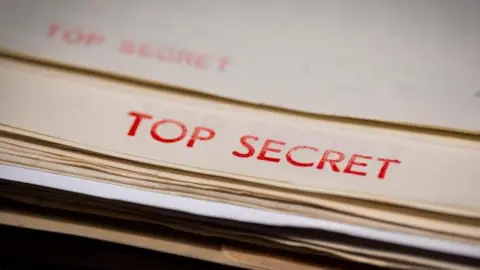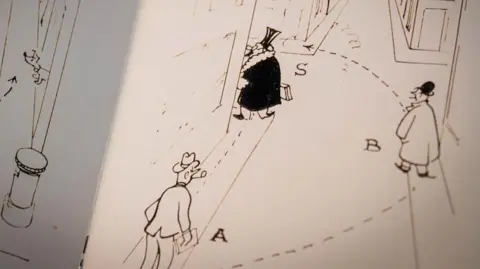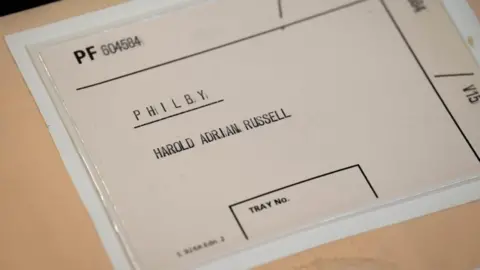 PA Media
PA MediaConfessions of double agents and tips for new spies have been released as part of a tranche of recently-declassified documents from MI5.
The documents are part of a new exhibition on display at the National Archives this spring and include details about some of Britain’s most notorious spies.
This includes the never-before-seen paper version of the first-hand account of Cambridge spy Kim Philby’s confession.
The National Archives said this was the first time in the intelligence agency’s 115-year history that it had been a partner in such an exhibition.
 PA Media
PA MediaUnlike other government departments, MI5 is not subject to the Freedom of Information Act. Instead, it chooses what portion of its archives are released to the public and those files are sometimes partially redacted.
“While much of our work must remain secret, this exhibition reflects our ongoing commitment to being open wherever we can,” said MI5 Director General Sir Ken McCallum.
As well as the details about high-profile individuals from the organisation’s early years, there is also newly-declassified guidance for recruits to the Security Service.
“A false moustache or beard is easily detected, especially under the high lights of a restaurant, pub, or in a tube train,” reads a booklet provided to agents during World War Two.
“Watchers” – effectively spies in MI5 – were also instructed to not have high hopes of a “glamourous” gig when they were working undercover.
“Screen sleuths of the secret service thriller or detective novel appeal to the uninitiated, but in actual practice there is little glamour and much monotony in such a calling as ‘observation’.”
But physical attributes could immediately disqualify you from being a “successful watcher”.
An ideal watcher should be a man of a “rather nondescript type” and “not be more than 5ft 7ins or 5ft 8ins in height”, the booklet says.
 PA Media
PA MediaCase details and confessions from some of the members of the so-called Cambridge Five spy ring have also been provided to the National Archives as part of the exhibit.
Kim Philby, Anthony Blunt, and John Cairncross – whose details are all included in the exhibit – were recruited as Soviet spies while at Cambridge University in the 1930s.
Philby’s confession to his long-time friend and fellow MI6 officer Nicholas Elliot is shared in the exhibition and sheds details on the dramatic confession he made in January 1963 – including that the double agent would do it all again.
According to the transcript of the pair’s conversation, Philby confessed that he found life at MI6 like a “controlled schizophrenia”.
“I really did feel a tremendous loyalty to MI6,” the Soviet double agent said, but his over-ruling fealty was to “the other side”.
Philby would go on to tell his then friend that “if he had his whole life to lead again, he would probably have behaved in the same way”.
Days later, the pair met for a third time where the double agent handed over a six-page typewritten account of covert work for the Soviet Union and how he had come to be recruited.
Shortly before the end of the war, Philby was promoted to head of MI6’s anti-Soviet section – meaning he was in charge of running operations against the Soviets while operating as a KGB agent.
He is considered one of the most successful double agents of the Cold War period in British intelligence history.
The MI5: Official Secrets exhibition opens at The National Archives this spring.



























+ There are no comments
Add yours